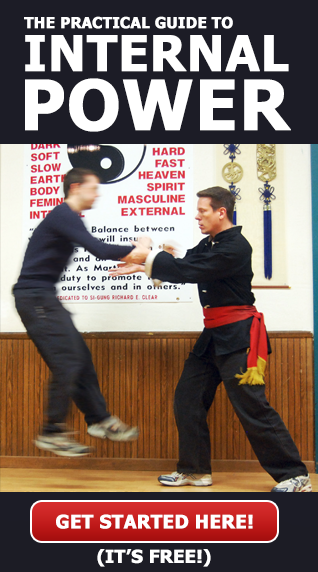There are four popular Tai Chi styles and many other Tai Chi styles that are lessor known. Tai Chi allegedly began on Wu Tang mountain around the 1300’s and then spread to other places (most notably Chen village) from there. Most of the main Tai Chi styles are named after the family that adopted and proliferated the particular style and methods of Tai Chi that they practice.
The most famous styles of Tai Chi taught today are
- Chen style
- Yang style
- Wu (Wu Chien Chuan) style
- Wu (Hao) style
- Sun style
- Chen Man Cheng style
- Wu Tang style
- Cheng style
- Taoist Tai Chi
- Fu style
- Li style
Out of these Tai Chi styles there are even greater sub categories as senior students of particular Tai Chi family styles have gone on to propagate their own version of Tai Chi with specific practice methods and various principles emphasized to a greater degree than others. This can lead to quite a bit of confusion for new Tai Chi practitioners when they are first exposed to other Tai Chi styles and methods as most often they have been taught specifics of their own Tai Chi style but more often than not do not have much exposure to other points of view and more in depth Tai Chi practices so as to understand why someone else’s Tai Chi style could look so different and yet still be correct Tai Chi.
In my next few posts I intend to write and elaborate a bit on several of the main Tai Chi styles including characteristics and points emphasized in the styles in the hopes of giving beginning Tai Chi practitioners a single place to gain a better understanding about the styles and how / why they are practiced.
In my first article I will elaborate a bit on what all Tai Chi styles share in common and then in the following articles I will write more about specific differences and points of emphasis.
This is Part 1 of 5.

I think this is a wonderful idea, Si-gung, and I look forward to reading your posts in this series! A request, please — when discussing the Yang branch of the tai chi chaun family tree, would you please spend a little time on the philosophical and technical differences between the older 64-movement “guang ping yang” form & the longer 106-movement “yang” form taught to the Emperor’s guards — in addition, naturally, to the evolution of the so-called “Beijing” long & short forms?
From my own studies, I believe that the deviation in principles introduced by Yang Pan-hou when forced to teach “his kung fu” to the hated Han, as well as the subsequent “watering-down” by the Chinese government in the last century, figure significantly in the West’s general perception of the entire tai chi category as being just an easy form of zero-impact stretching exercises — sort of like “yoga-lite” or “pilates for old people” — rather than properly recognizing it as one of the penultimate martial arts.
Thanks!
Sorry! I meant “Manchu” rather than “Han”, above…
Mr Clear your photo doing Wu tai chi in front of MYL has grabbed my attention. I have a newly formed in a town of 30000 in Victoria australia. Obviously I want to be an effective TCC teacher. do you have wu resources, digital, or print. I have the Shanghai books on slow, fast form and push hands. I can do the Jian form and Sabre but not to full fluency. The Push hands book is very poorly translated and suffers from this, even miscommunicates. Basicall I am after drills for push hands and weapons in the Shanghai Wu
Hi George,
I got internal push hands that is normally secretly taught only to indoor students directly from Master Ma (MYL).
The internal push hands is the most important training for Tai Chi internal power.
Take a look at my website for more info about the internal push hands training: https://www.clearstaichi.com/push-hands
For the DVDs / Digital training for the internal push hands go here: https://store.clearstaichi.com/collections/tai-chi/products/clears-internal-push-hands-instructor-package
I look forward to hearing about your progress. 🙂
Sifu Clear